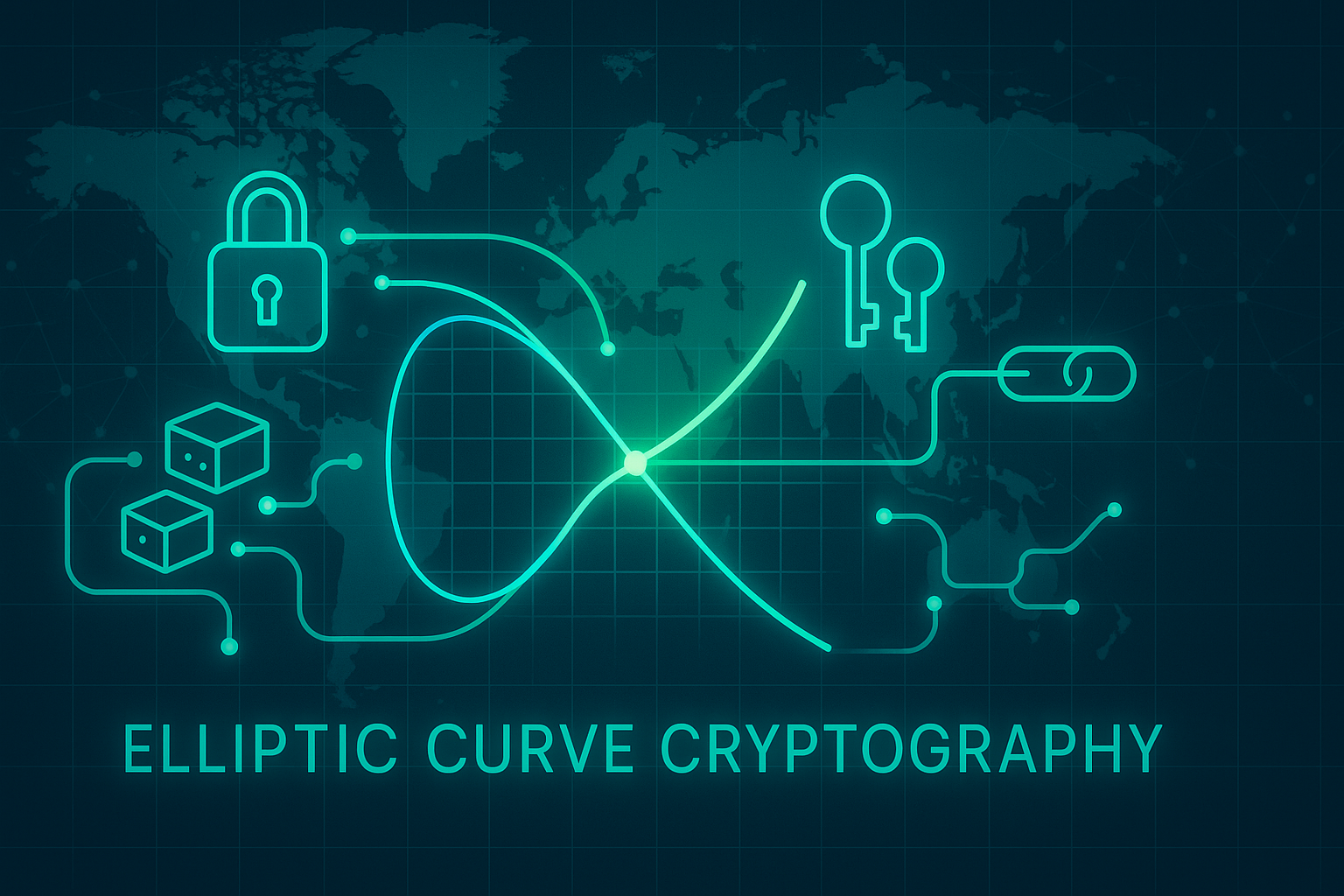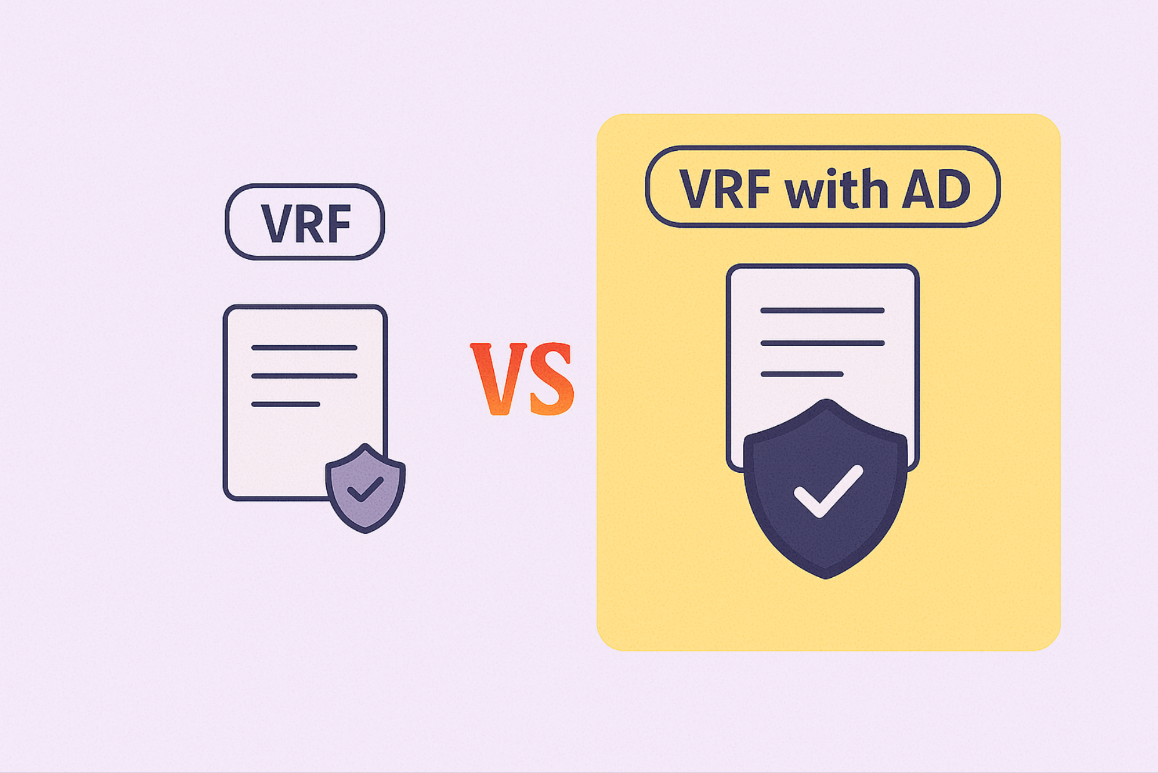How to Transition Your Business from Web2 to Web3: A Comprehensive Guide

Prasad Kumkar
CEO

The Evolution of the Web: Why Web3 Matters for Your Business#
The internet has undergone remarkable transformation in just three decades. What began as Web1—a static, read-only experience—evolved into Web2, bringing interactive functionality, user-generated content, and enhanced interoperability that defines our current digital landscape. Now, we stand at the threshold of Web3, representing a fundamental shift toward decentralization, data ownership, and peer-to-peer interactions without intermediaries1.
Recent trends indicate a 33% rise in Web3 interest over the past few months, signaling growing business recognition of this technology's potential1. This transition isn't merely a technical upgrade—it's a paradigm shift from application-centric design to user-centric decentralization that promises to redefine how businesses operate, compete, and create value in the digital economy.
For forward-thinking businesses, understanding and implementing this transition isn't optional—it's becoming essential for future competitiveness, customer engagement, and operational resilience in an increasingly decentralized digital ecosystem.
Web2 vs Web3: Understanding the Fundamental Differences#
The Web2 Paradigm#
Web2, emerging in the mid-2000s, revolutionized online experiences by introducing user-generated content, social connectivity, and intuitive interfaces2. This iteration brought unprecedented accessibility but at a hidden cost—centralization. A handful of technology giants gained control over vast swaths of user data, digital infrastructure, and online experiences, creating walled gardens that limit true ownership and interoperability.
Web2 platforms typically:
- Store user data on centralized servers
- Maintain full control over platform rules and access
- Extract significant value from user-generated content
- Rely on advertising-driven business models
- Operate as intermediaries between users and services
The Web3 Revolution#
Web3 fundamentally reimagines this relationship by leveraging blockchain technology to create truly decentralized applications and services. Rather than placing control in the hands of platform owners, Web3 distributes ownership and governance among users themselves2.
Key characteristics of Web3 include:
- Decentralized infrastructure based on blockchain technology
- Data immutability and anti-censorship capabilities
- User-owned digital assets and identities
- Cryptographic security and privacy protections
- Token-based economics enabling new business models
- Elimination of intermediaries through smart contracts
This paradigm shift represents not just technological evolution but a philosophical reorientation toward digital autonomy, user sovereignty, and distributed value creation.
Why Businesses Are Moving to Web3: Compelling Advantages#
Complete Data Ownership and Sovereignty#
Web3 provides users and businesses with unprecedented control over their digital assets and information2. Unlike Web2 applications where data ownership remains ambiguous and centralized, Web3 creates clear, verifiable ownership through blockchain technology. This transforms how businesses approach intellectual property, digital assets, and user relationships.
Enhanced Security and Trust#
Traditional centralized systems present single points of failure that can compromise entire platforms. Web3's decentralized architecture distributes security across networks, making systems inherently more resilient against attacks5. The immutable nature of blockchain transactions also creates auditable trails that enhance transparency and build trust—a critical currency in today's digital economy.
New Revenue Models and Value Creation#
Web3 enables innovative business models through tokenization, digital asset ownership, and direct value exchange. These capabilities allow businesses to:
- Create token-based loyalty programs with real transferable value
- Enable fractional ownership of digital and physical assets
- Implement automated royalty and revenue-sharing mechanisms
- Establish direct economic relationships with customers without intermediaries
- Tap into community-driven development and marketing
Community Engagement and Governance#
The decentralized nature of Web3 fosters deeper community involvement through token-based governance models. Businesses can give stakeholders direct input into product development, feature prioritization, and strategic decisions—creating unprecedented alignment between company objectives and user interests.
Technical Considerations for Web2 to Web3 Migration#
Assessing Migration Readiness#
Before diving into migration, businesses must evaluate:
- Which aspects of their applications would benefit most from decentralization
- What blockchain infrastructure aligns with business requirements
- How existing data structures will translate to decentralized models
- Whether a hybrid approach might be appropriate for gradual transition
Not every business function requires decentralization, and strategic assessment prevents unnecessary complexity and cost5.
Infrastructure and Architecture Decisions#
Web3 implementation requires fundamental architecture decisions, including:
Blockchain Selection: Different blockchains offer varying trade-offs in terms of transaction speed, security, cost, and ecosystem maturity. Options range from high-throughput chains like Solana to established ecosystems like Ethereum and enterprise-focused solutions like Hyperledger.
Storage Solutions: Decentralized storage through platforms like IPFS, Filecoin, or Arweave offers alternatives to centralized database management.
Front-End Integration: Connecting traditional web interfaces with blockchain functionality through tools like ethers.js, Web3.js, and various wallet integration protocols.
User Experience Considerations#
A significant challenge in Web2 to Web3 migration involves reimagining user experiences to accommodate blockchain interactions while maintaining accessibility. Successful migrations prioritize:
- Simplified wallet creation and management
- Abstraction of complex cryptographic processes
- Clear explanation of blockchain transactions and fees
- Progressive decentralization that introduces Web3 concepts gradually
Data Migration Strategy#
Migrating from centralized databases to decentralized structures requires careful planning:
- Identifying which data should live on-chain versus off-chain
- Implementing encryption and privacy protection for sensitive information
- Creating migration paths that maintain data integrity and relationships
- Establishing procedures for ongoing data synchronization during transition periods
Practical Step-by-Step Migration Approach#
1. Define Your Web3 Objectives and Scope#
Begin by clearly articulating why you're migrating to Web3 and what specific business outcomes you expect. Are you primarily focused on:
- Creating new revenue streams through tokenization?
- Enhancing data security and ownership?
- Building community governance mechanisms?
- Reducing dependency on centralized platforms?
This clarity will guide all subsequent technical and strategic decisions.
2. Develop Technical Expertise#
Web3 development requires specialized knowledge. Options include:
- Upskilling existing development teams on blockchain technologies
- Partnering with specialized Web3 development agencies
- Hiring developers with blockchain experience
- Utilizing development frameworks that simplify blockchain integration
The lack of Web3 background among Web2 developers represents a significant barrier to easy and effective transition3, making talent development a critical priority.
3. Create a Hybrid Architecture#
Most successful migrations begin with hybrid models that bridge Web2 and Web3 functionalities:
- Maintain existing Web2 backends while introducing Web3 features
- Use traditional databases alongside blockchain storage
- Implement centralized failsafes for critical functions
- Gradually increase the proportion of decentralized components
This approach allows for testing and validation while minimizing disruption to existing users.
4. Implement Authentication and Identity Solutions#
Replace traditional username/password systems with blockchain-based authentication:
- Integrate wallet-based login systems
- Consider implementing decentralized identity solutions
- Maintain backward compatibility for existing users
- Provide clear onboarding for users new to Web3
5. Redefine Data Models and Ownership#
Transform data structures to leverage blockchain capabilities:
- Identify assets that can be represented as tokens
- Implement smart contracts for critical business logic
- Create clear data ownership and permission structures
- Design for appropriate on-chain/off-chain balance
6. Develop and Test Incrementally#
Rather than attempting a complete overhaul, successful migrations proceed through:
- Releasing limited Web3 functionality to select user groups
- Gathering feedback and iterating rapidly
- Expanding features based on user adoption and technical stability
- Maintaining parallel systems during transition periods
7. Address Regulatory and Compliance Requirements#
Web3 introduces novel regulatory considerations:
- Evaluate token models for securities compliance
- Implement KYC/AML where legally required
- Consider cross-border transaction implications
- Document data protection and privacy measures
Overcoming Common Migration Challenges#
Technical Complexity#
The learning curve for Web3 technologies remains steep. Successful businesses:
- Start with well-documented, mature technologies
- Leverage existing frameworks and tools
- Join developer communities for knowledge sharing
- Build proof-of-concepts before full implementation
User Adoption Resistance#
Many users remain unfamiliar with Web3 concepts like wallet management and transaction fees. Mitigate this through:
- Progressive introduction of Web3 features
- Comprehensive education and onboarding
- Abstraction of technical complexity
- Clear communication of benefits and value proposition
Performance Considerations#
Blockchain transactions typically execute more slowly than centralized alternatives. Address this by:
- Implementing layer-2 scaling solutions
- Using off-chain processing for non-critical operations
- Designing systems that batch transactions efficiently
- Setting appropriate user expectations for transaction finality
Future-Proofing Your Web3 Strategy#
The Web3 landscape continues to evolve rapidly. Future-proof your approach by:
- Building on modular, interoperable standards
- Avoiding proprietary or closed ecosystems
- Participating in governance of protocols you depend on
- Maintaining flexibility to adapt to emerging blockchain technologies
The strategic advantage of early adoption comes not just from implementing current Web3 capabilities, but from positioning your business to rapidly incorporate future innovations as the ecosystem matures.
Real-World Examples of Successful Web2 to Web3 Transitions#
Multiple industries have pioneered successful Web2 to Web3 migrations:
Media and Content Creation: Traditional publishing platforms transforming into decentralized networks where creators directly monetize their work through tokens, NFTs, and direct community support.
Gaming: Game developers implementing true digital ownership of in-game assets through NFTs, creating entirely new economic models and player experiences.
Finance and Banking: Financial services incorporating decentralized finance (DeFi) capabilities alongside traditional offerings, enabling programmable money and automated financial services.
Supply Chain Management: Manufacturing and logistics companies implementing blockchain-based tracking and verification systems that enhance transparency and efficiency throughout complex supply networks.
These pioneers demonstrate that successful transitions focus not just on implementing technology, but on fundamentally reimagining value creation, user relationships, and business models.
Chainscore Labs: Your Partner in Web3 Transformation#
Navigating the complex Web3 landscape requires experienced guidance. Chainscore Labs stands at the forefront of Web3 transformation, offering comprehensive services to businesses at every stage of their journey from Web2 to Web3.
Their expertise encompasses:
- Strategic Web3 consultation and roadmap development
- Technical implementation and migration support
- Smart contract development and security auditing
- Token model design and implementation
- Community building and engagement strategies
- Ongoing Web3 infrastructure management
With Chainscore's guidance, businesses can avoid common pitfalls, accelerate their transition timeline, and maximize the strategic advantages of Web3 adoption.
Conclusion- Embracing the Decentralized Future#
The transition from Web2 to Web3 represents more than a technological upgrade—it's a fundamental rethinking of how businesses create value, engage users, and position themselves in the digital economy. While challenges exist, the potential benefits in terms of new business models, enhanced security, and user empowerment make this transition increasingly essential for forward-thinking companies.
By taking a strategic, incremental approach that balances technical implementation with business objectives, companies can successfully navigate this transition while minimizing disruption and maximizing value creation.
The future belongs to businesses that recognize decentralization not as a technical trend, but as a transformative force reshaping the digital landscape. Those who successfully make this transition will find themselves positioned for unprecedented growth, innovation, and competitive advantage in the emerging Web3 economy.
Ready to begin your Web3 transformation journey? Connect with Chainscore Labs today to develop your personalized transition strategy and implementation roadmap.

About Prasad Kumkar
CEO
Prasad Kumkar, a technology leader, founded Chainscore Labs to lead the Web3 revolution. With over 6+ years of experience, he excels at building and scaling engineering projects. As the Head of Web3 at Ignite Tournaments, he grew the team, leading to significant contributions in its growth, serving millions. He has a proven history of turning innovative ideas into successful products, as demonstrated by his role at Reax Finance, Tekika, and Telosx.
Continue Reading

From Bytes to Points: How Try-and-Increment and Elligator 2 Map to Curves
Learn how messages are mapped to elliptic curve points using Encode-to-Curve methods. This blog compares Try-and-Increment and Elligator 2, exploring their use in VRFs and cryptographic protocols.


The Cryptographic Foundation: Understanding Elliptic Curves in VRF-AD Implementation
Explore how elliptic curves form the backbone of VRF-AD, ensuring security, efficiency, and performance in cryptographic systems


Verifiable Randomness with Context: Understanding VRF with Additional Data (VRF-AD)
About VRF-AD, a cryptographic enhancement adding context to traditional VRFs. Covering VRF fundamentals, how additional data solves replay attacks and domain separation, and technical implementation.


Top Web3 Trends to Watch in 2025
Explore the cutting-edge Web3 trends of 2025 that will transform businesses across industries, from green blockchain and decentralized AI to CBDCs and DeFi—with actionable implementation strategies.


Smart Contracts Explained: Enhancing Security & Efficiency in Your Business
Discover how smart contracts can revolutionize your business operations with automated execution, enhanced security, and cost reduction while eliminating intermediaries—plus practical strategies.
